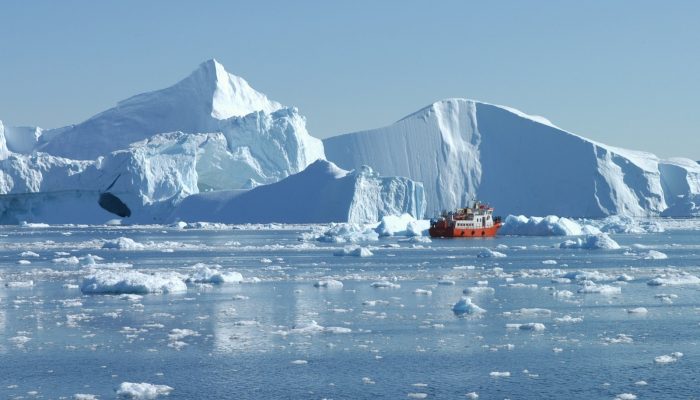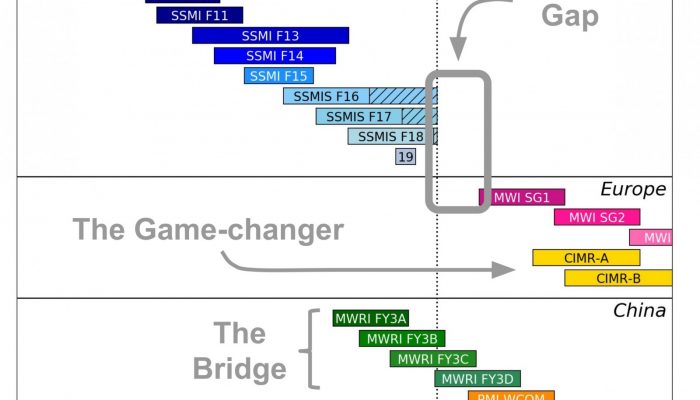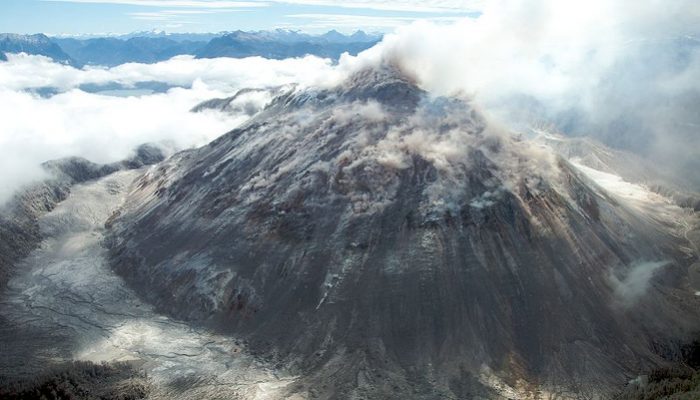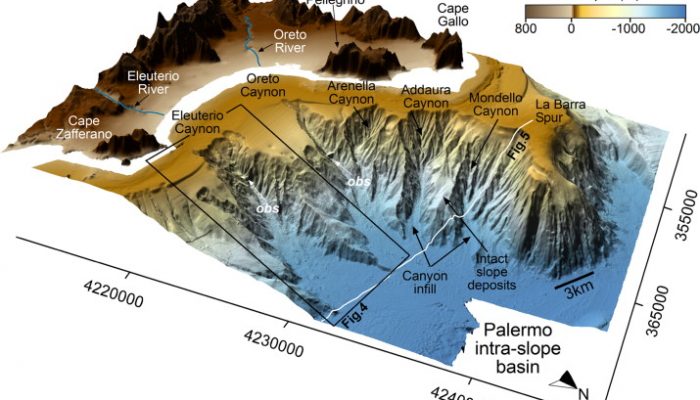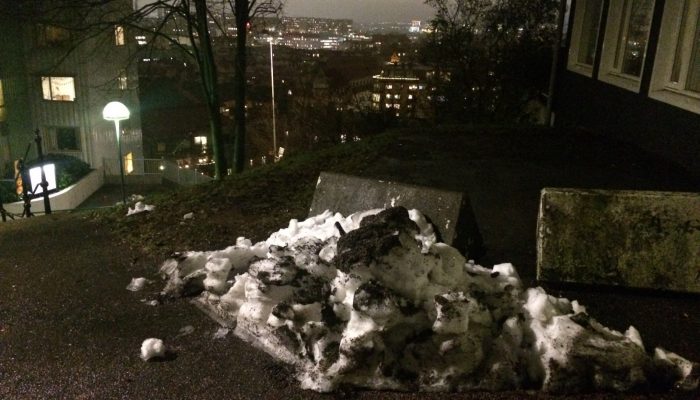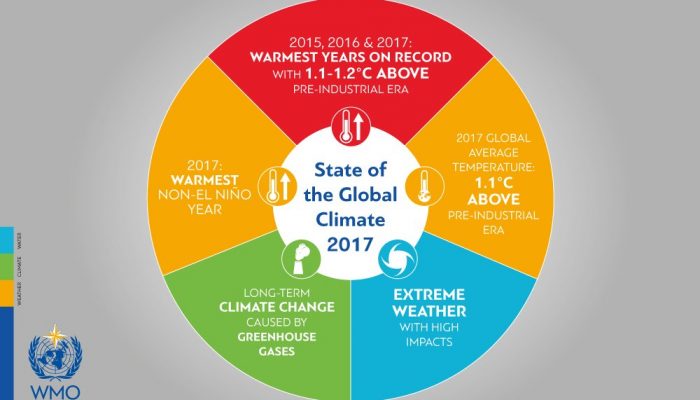The Greenland ice sheet is undergoing rapid change, and nowhere more so than at its margins, where large outlet glaciers reach sea level. Because these glaciers are fed by very large reservoirs of ice, they don’t just flow to the coast, but can extend many kilometres out into the ocean. Here, the ice – being lighter than water – will float, but remain connected to the ice on the mainland. This phe ...[Read More]
If you didn't find what you was looking for try searching again.
Cryospheric Sciences
Image of the Week – The Gap, the Bridge, and the Game-changer
The Gap, the Bridge, and the Game-changer are three series of satellites. They carry instruments that measure the microwave radiation emitted by the Earth (called passive microwave instruments), while flying 800 km above our heads at 7,5 km/s. Since the late 1970s, most sea ice properties (concentration, extent, area, velocity, age and more!) have been measured with such passive microwave instrume ...[Read More]
GeoLog
Migrating scientists
Scientific research is no doubt enriched by interdisciplinarity and collaborations which cross borders. This, combined with the scarcity of academic positions and the need to further ones horizons by experiencing varied research environments, leads many scientists to relocate (if only on a short term basis) to a country which is not their own. In today’s post, freelance science writer Rober ...[Read More]
Geochemistry, Mineralogy, Petrology & Volcanology
Building a lava dome: one block at a time
Lava domes form when lava is extruded from a volcanic vent, but is too viscous to flow far away. Think of thick treacle that does not flow as easily as runny honey, and so when it is extruded, it forms a “lava pile” around the vent. Lava domes commonly form within the crater of a larger volcano (e.g. Mt. St. Helens), but can also stand alone or form part of a “dome complex”. A lava dome can take o ...[Read More]
Natural Hazards
“Twenty or more Leagues Under the Sea”: A journey to understand submarine canyons
As NhET, we have the pleasure to have Mauro Agate as our guest and interviewee today. We discuss about submarine canyons and related geo-hazards. Further details will be available at: http://www.sciencedirect.com/science/article/pii/S0967064513002488 for a scientific-oriented audience; or https://www.youtube.com/channel/UCwWErQNoZYpJhhkxPa82x5g for a broader audience. Dr. Mauro Agate is a ...[Read More]
Cryospheric Sciences
Image of the week – How hard can it be to melt a pile of ice?!
Snow, sub-zero temperatures for several days, and then back to long grey days of near-constant rain. A normal winter week in Gothenburg, south-west Sweden. Yet as I walk home in the evening, I can’t help but notice that piles of ice have survived. Using the equations that I normally need to investigate the demise of Greenland glaciers, I want to know: how hard can it be to melt this pile of ice by ...[Read More]
Geomorphology
Do glaciers really do all the work? Perhaps not.
Kerry Leith from the Engineering Geology Department at the ETH Zürich set up a post on their latest publication and the backstory behind it. As they announced on their own website (www.stressdriven.com) review comments ranged from “mediocre or poor” to “[…] provocative, potentially revolutionary (if correct) analysis”. It surely contains interesting thoughts. – ...[Read More]
GeoLog
EGU 2018: How to make the most of your time at the General Assembly without breaking the bank
Attending a conference is not cheap, even if you’ve been lucky enough to secure some funds to help with travel, accommodation and/or registration costs. However, with a little insider knowledge from those who’ve attended the General Assembly many times before, it is possible to have a (scientifically) rewarding week in Vienna, without breaking the bank. Before you get there A sure way to save a fe ...[Read More]
Tectonics and Structural Geology
Paris: From quarry to catacombs
Paris, 2000 ya. Claude is sweating all over. It’s mid-July and the sun is burning on his skin. With his hammer and shovel he is digging up grey and white stones. The faults and fractures in the rock help him to get the rocks out easily. But still, it’s hot and humid and his shift isn’t over yet. Luckily he can’t complain about the view. Lutetia, one of the new Roman settlements lies right in front ...[Read More]
GeoLog
January GeoRoundup: the best of the Earth sciences from across the web
Drawing inspiration from popular stories on our social media channels, as well as unique and quirky research news, this monthly column aims to bring you the best of the Earth and planetary sciences from around the web. Major stories The World Meteorological Organization (WMO) has confirmed that 2017 is among the three warmest years on record. The three years with the highest temperature on record ...[Read More]

